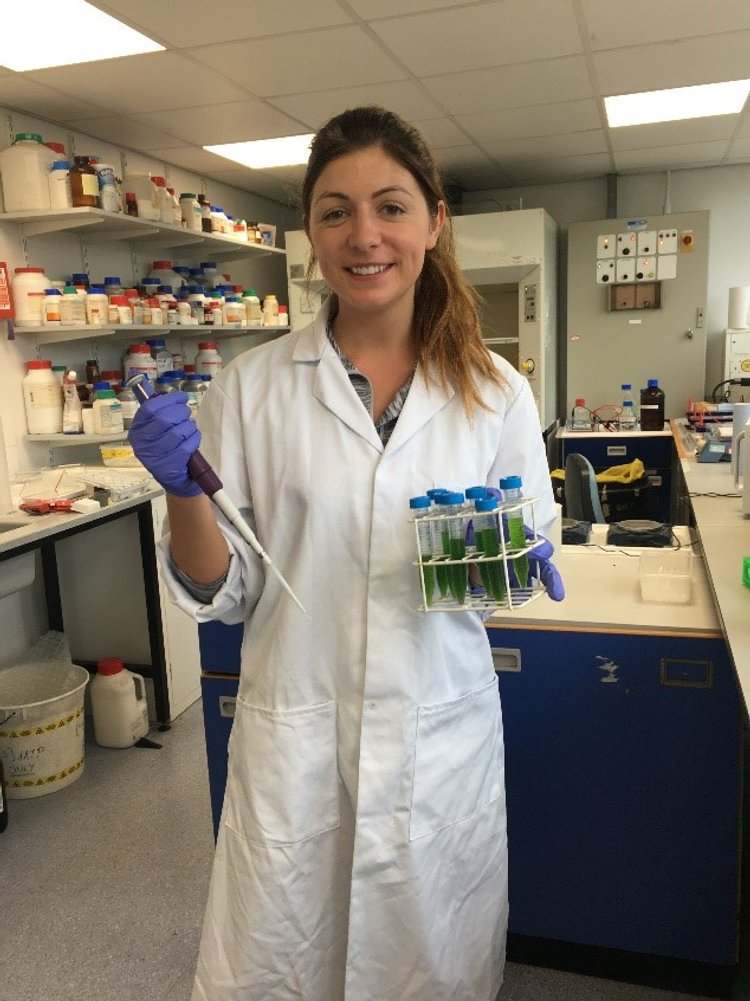Photo credit: Angeliki kourmouli
PHoto credit: freddie miller
Anna Gardner looked at the effects of increased carbon dioxide on specific forest health markers (chlorophyll concentrations and nitrogen) across the canopy of mature oak trees. She found that both of these forest health markers demonstrated traits that need to be considered for future analyses.
Atmospheric carbon dioxide (CO₂) is rapidly increasing and will directly and indirectly affect plant physiological processes and nutrient cycling in forests. At the Birmingham Institute of Forest Research (BIFoR) we investigate the effects of elevated CO₂ (eCO₂) on temperate forest systems using a Free Air CO₂ Enrichment (FACE) facility in Staffordshire. One of the key nutrient cycles to assess with climate change is nitrogen, an important nutrient for trees. Nitrogen is essential in maintaining photosynthetic activities in the canopy and therefore its availability is vital for forest productivity. Photosynthetic pigments, such as chlorophyll, are rich in nitrogen and are important in the light capture stage of photosynthesis.
Previous research has suggested there may be decreases in photosynthetic pigments with eCO₂. But few such studies have been done in aged forest trees. An understanding of any changes in the light harvesting machinery with eCO₂ is useful when assessing forest health, canopy processes and changes in biogeochemical cycles in future climate scenarios. Our newly published study assesses the effects of eCO₂ and canopy position on chlorophyll concentrations and nitrogen in mature oak - Quercus robur (Q. robur). To do this over 5,000 in situ chlorophyll absorbance measurements, and chlorophyll extractions and nutrient analysis were collected from Q. robur at the BIFoR-FACE study site.
The results highlight that chlorophyll varied seasonally and between study years and increased with the depth of the canopy. This suggests that canopy chlorophyll is highly dynamic in oak canopies. Therefore this needs to be considered in remote sensing measures using canopy light absorptance, or greenness as proxies for light-use efficiency. Additionally, we found that any eCO₂ driven changes in chlorophyll were consistent with changes in leaf mass per area (Marea) suggesting a lack of effect of eCO₂ on chlorophyll content. These results suggest that increased cell-stacking and chlorophyll density in oak leaves may help regulate the eCO₂ response and within-canopy variation. We found similar patterns in nitrogen; again with no effect of eCO₂ once Marea had been accounted for. Our results suggest that nitrogen is not yet limiting for the photosynthetic process in these trees and that there are no changes to the allocation of nitrogen within the leaves. Our results highlight key factors for consideration in vegetation modelling when scaling photosynthetic processes and canopy nitrogen use.
Gardner et al. (2022) Are chlorophyll concentrations and nitrogen across the vertical canopy profile affected by elevated CO₂ in mature Quercus trees? Trees https://doi.org/10.1007/s00468-022-02328-7




